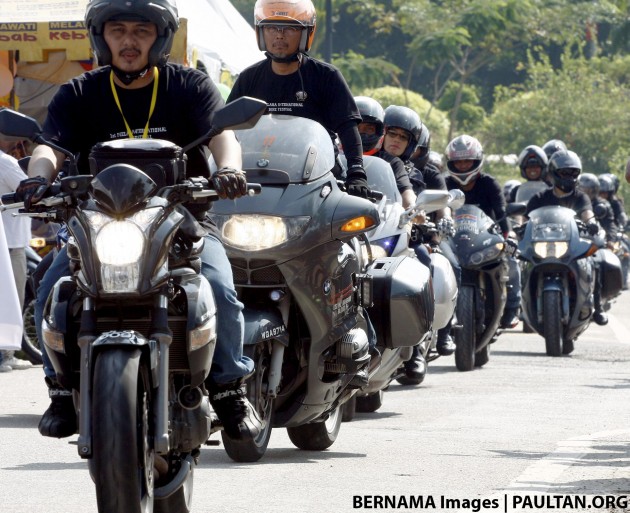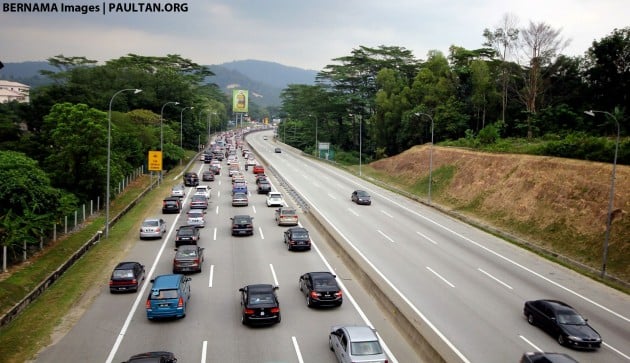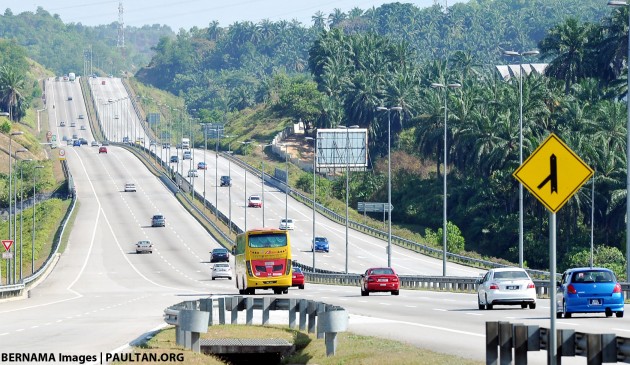A statement by deputy transport minister Datuk Aziz Karpawi that motorcycles would be banned from using the fast lane on Malaysian highways and expressways, pending approval of a request from his ministry, has raised hackles amongst the riding community, and as well support, from readers.
Taken at face value, the proposed ban has both merits and disadvantages, not the least of which is the increased danger to motorcyclists having to share lane space with much bigger and heavier vehicles.
Perhaps the minister’s statement required clarification, in that lower-capacity motorcycles, unable to keep up with the median speed and flow of fast-moving traffic on the highways, should indeed be banned from the fast lane, and perhaps using highways designed for high speed traffic, entirely. In America, and other places around the world, two-wheeled vehicles that are unable to sustain a minimum speed of 100 km/h, are prohibited from using highways.
This is to address the issue of speed differential, in that it is safest for traffic on a highway to be moving at a minimum relative speed to each other. A single vehicle that is moving too slowly, such as a small motorcycle, or a heavily loaded vehicle in the fast lane, causes a disruption in traffic flow that may last for hours, long after the vehicle in question has moved on.
The problem is that the minister’s statement lacked a specific definition of the word “motorcycle”. Not all motorcycles are created equal, and different types of bikes have very differing levels of performance.
Certainly, a kapchai, capable of perhaps 90 km/h top speed, has no place on highways where other, bigger, vehicles are traveling at 110 km/h or 120 km/h. This is common sense safety. But a large-capacity bike, with the equivalent in terms of power-to-weight of a high-performance car, is able to safely share the highway.
A single motorcycle, moving at a pace of a little over the current traffic flow speed, say, about 10 to 20 km/h faster, is actually safer in traffic then if the rider were to match the speed of vehicles alongside. However, too large a speed differential, perhaps 30 to 50 km/h over or under, is dangerous for all road-users at that moment in time.
Should riders, irrespective of the size of motorcycle they ride, be forced to use the middle and left lanes for travel, this means they are forced to travel at the same speed as the rest of highway traffic. Being barred from using the right-most lane means that motorcyclists will be forced to under-take traffic on the left, and potentially be squeezed in between vehicles.
The other issue will be instead of filtering through traffic, as normal, riders are forced to take up a car’s worth of lane-space. Moving with the traffic flow, and with a vehicle both in front and behind, the motorcyclist risks becoming a human sandwich should the driver behind not brake in time.
At 110 km/h, a driver or rider has only six seconds to react to an object 100 metres away before reaching it. While in racing terms, six seconds is an eternity, on public roads, a moment’s inattention from the rider or driver at the national speed limit can be fatal. The issue that needs to be addressed here is driver and rider behaviour while using highways, and not so much the outright ban of vehicles that are actually able to share the roads safely with other types of vehicle.
Since local highways have to accomodate a myriad of vehicle types, and formal driver education tends to be lackadaisical at best, the general road rule is that the overtaking lane, commonly called the ‘fast lane’, means exactly that. It is supposed to be used for over-taking only, not for any vehicle, two or four-wheeled, to be sitting in the lane, planted at exactly the speed limit, and holding up other road-users behind it.
Overtaking, and use, of the outer-most lane, should be done quickly, and safely, with a minimum of disruption to other road-users. A check of the mirrors before moving out is necessary, and use of the turn signal. However, having a turn signal does not mean pulling out and expecting other traffic to stop for you.
Changing lanes should be done after determining that there is no approaching traffic, and the onus is on the driver making the lane change to ensure that conditions are safe for such a manoeuvre. As for motorcycles, doing ultra-legal speeds in the fast lane is both illegal and insane.
Slow moving vehicles should confine themselves to the left-most or middle lanes, and if overtaking a slower vehicle is necessary, speed up a little and over-take quickly and safely, not change lanes and slow down.
A selfish attitude on the road is of no benefit to anyone. Driving, or riding, with your ego usually tends to be fatal, eventually. Sharing the roads, with due consideration to other road users, along with ensuring that everyone else, including yourself is safe, is the best solution.





AI-generated Summary ✨
Comments mostly oppose banning motorcycles from highways, emphasizing safety concerns and practical issues. Many highlight that motorcyclists should use dedicated lanes and follow road rules, criticizing the current poor condition of bike lanes and enforcement. Some defend motorcyclists, pointing out their necessity due to high vehicle taxes and limited affordability of cars. Concerns are raised about reckless riding, lane splitting, and the dangers of high-speed riding, especially by superbikes. Several comments call for proper motorcyclist education, stricter law enforcement, and better infrastructure. Overall, users believe that with proper discipline, infrastructure improvement, and legal enforcement, motorcycles can safely share highways without bans, emphasizing mutual respect among road users.